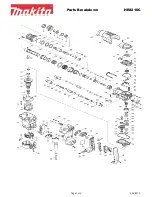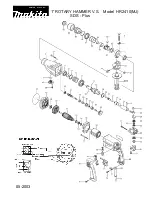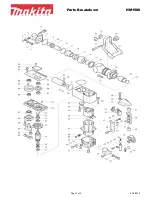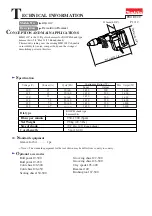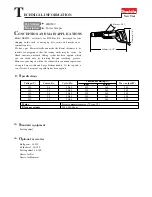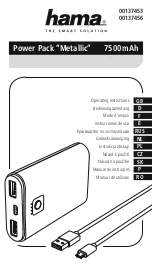
39
EnGLIsh
• Do not point the tool at co-workers or yourself at any
time. No horseplay! Work safe! Respect the tool as a
working implement.
• Keep bystanders, children, and visitors away while operating a
power tool. Distractions can cause you to lose control. When
tool is not in use, it should be locked in a safe place, out of the
reach of children.
• Do not overreach. Maintain proper footing and balance at all
times. Loss of balance may cause personal injury.
•
Use the tool only for its intended use. Do not discharge
fasteners into open air or any material too hard for the
staple to penetrate. Do not use the body of the tool or
top cap as a hammer. Discharged staple may follow
unexpected path and cause injury.
•
Always keep fingers clear of contact trip to prevent
injury from inadvertent release of the staple.
•
Refer to the
Maintenance
and
Repairs
sections for
detailed information on the proper maintenance of
the tool.
• Always operate the tool in a clean, lighted area. Be sure
the work surface is clear of any debris and be careful not to
lose footing when working in elevated environments such
as rooftops.
• Fasteners must be driven straight into the material. Do not tilt
the stapler while driving fasteners. Personal injury can result
from ricocheted or jammed staples.
•
Keep hands and body parts clear of immediate
work area.
WARNING:
To avoid injury keep hands and body away
from the front discharge area of the tool.
•
Do not use tool in the presence of flammable dust, gases
or fumes.
This tool produces sparks that can ignite gases or
dust causing an explosion. Driving a staple into another staple
may also cause a spark.
•
Keep face and body parts away from back of the tool
cap when working in restricted areas.
Sudden recoil can
result in impact to the body, especially when stapling into
hard or dense material.
• Grip tool firmly to maintain control while allowing tool to
recoil away from work surface as fastener is driven.
•
Be aware of material thickness when using stapler.
A
protruding staple may cause injury.
•
Stay alert, watch what you are doing and use common
sense when operating a power tool. Do not use tool
while tired or under the influence of drugs, alcohol, or
medication.
A moment of inattention while operating power
tools may result in serious personal injury.
Residual Risks
In spite of the application of the relevant safety regulations
and the implementation of safety devices, certain residual risks
cannot be avoided. These are:
• Impairment of hearing.
• Risk of personal injury due to flying particles.
• Risk of burns due to accessories becoming hot
during operation.
• Risk of personal injury due to prolonged use.
SAVE THESE INSTRUCTIONS
Chargers
Electrical Safety
The electric motor has been designed for one voltage only.
Always check that the battery pack voltage corresponds to the
voltage on the rating plate. Also make sure that the voltage of
your charger corresponds to that of your mains.
Your
D
e
WALT
charger is double insulated in
accordance with EN60335; therefore no earth wire
is required.
If the supply cord is damaged, it must be replaced by a
specially prepared cord available through the
D
e
WALT
service organisation.
Mains Plug Replacement
(U.K. & Ireland Only)
If a new mains plug needs to be fitted:
• Safely dispose of the old plug.
• Connect the brown lead to the live terminal in the plug.
• Connect the blue lead to the neutral terminal.
WARNING:
No connection is to be made to the
earth terminal.
Follow the fitting instructions supplied with good quality plugs.
Recommended fuse: 3 A.
Using an Extension Cable
An extension cord should not be used unless absolutely
necessary. Use an approved extension cable suitable for
the power input of your charger (see
Technical Data
). The
minimum conductor size is 1 mm
2
; the maximum length
is 30 m.
When using a cable reel, always unwind the cable completely.
D
e
WALT
chargers require no adjustment and are designed to be
as easy as possible to operate.
Important Safety Instructions for All Battery
Chargers
SAVE THESE INSTRUCTIONS:
This manual contains important
safety and operating instructions for compatible battery
chargers (refer to
Technical Data
).
• Before using charger, read all instructions and cautionary
markings on charger, battery pack, and product using
battery pack.
WARNING:
Shock hazard. Do not allow any liquid to get
inside charger. Electric shock may result.
WARNING:
We recommend the use of a residual current
device with a residual current rating of 30mA or less.
CAUTION:
Burn hazard. To reduce the risk of injury,
charge only
D
e
WALT
rechargeable batteries. Other types of
batteries may burst causing personal injury and damage.































